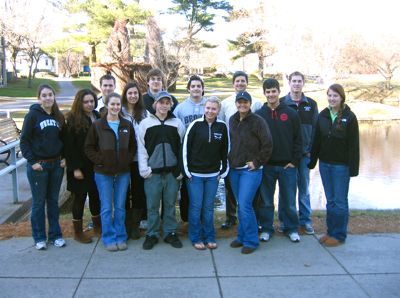
First Year Seminar - Fall 2008
Water, water every where:
The legacy of the 1927 flood of the Mississippi River and Hurricane Katrina
The spring of 1927 was exceptionally wet in the eastern United States, with one storm dropping six to fifteen inches of rain over several hundred thousand square miles in a single day. Six days later, the levee of the Mississippi River broke at Mounds Landing, releasing a wall of water three quarters of a mile wide and over 100 feet deep into the Mississippi Delta. This single crevasse eventually flooded an area over 50 miles wide and 100 miles long and covered houses 75 miles away. In total, over 27,000 square miles were flooded, an area roughly equal to Connecticut, Massachusetts, New Hampshire, and Vermont combined. Approximately 700,000 people were displaced throughout the lower Mississippi valley at tremendous human cost to those who could least afford it. Seventy-eight years later, southern Mississippi and Louisiana were ravaged by Hurricane Katrina, again with devastating consequences.
What human decisions amplified the destructive power of these natural disasters? What societal and economic factors not only contributed to the calamities but also shaped the nation's response to the
disasters? In this course, we will study the circumstances surrounding both of these catastrophes and examine how the events in 1927 foreshadowed the tragedies that unfolded three quarters of a
century later when Hurricane Katrina struck the Gulf Coast.
- Tentative Syllabus
- Course Policies (.pdf file)
- The Honor Code at Wheaton
- Calendar of Events on campus
- On-Line Grammar and Citation Guide at Purdue University. In particular,
see the Research and Citation - MLA Formatting and Style Guide for information on proper citations and format.
- Some resources about Katrina, some which might be useful for your documentary
- Hurricane Katrina NOAA Images: http://ngs.woc.noaa.gov/katrina/
- The Biloxi-Gulfport Sun-Herald Katrina coverage: http://www.sunherald.com/katrina/
- The New Orleans Times-Picayune Katrina coverage: http://www.nola.com/katrina/
- The Mississippi Renewal Forum: http://www.mississippirenewal.com/index.html and the
Final Team Reports http://www.mississippirenewal.com/info/plansReports.html for each community
- Some resources for making documentaries
- The Center for Digitial Storytelling is a very extensive resource. The Digital Storytelling Cookbook will be especially handy.
- There is similar material at the Educational Uses of Digital Storytelling at the University of Houston with a slightly different slant.
- The section on "Tips on creating questions for Interviews, and interview styles" in the DVworkshops Newsletter has some useful tips.
- Audacity "is free, open source software for recording and editing sounds. It is available for Mac OS X, Microsoft Windows, GNU/Linux, and other operating systems."
The last day of class. . .

Last Modified May 7, 2009 10:14 PM
